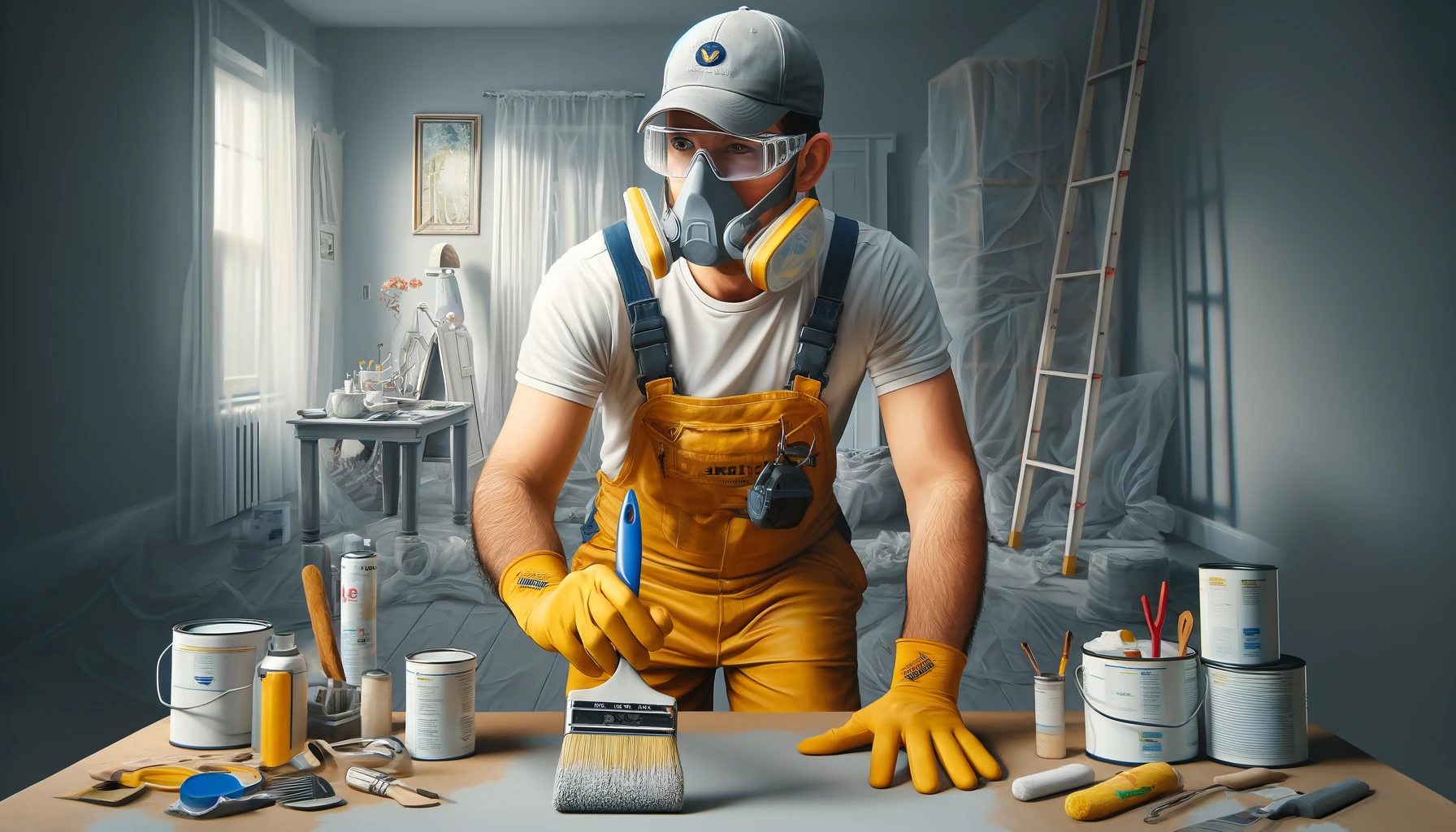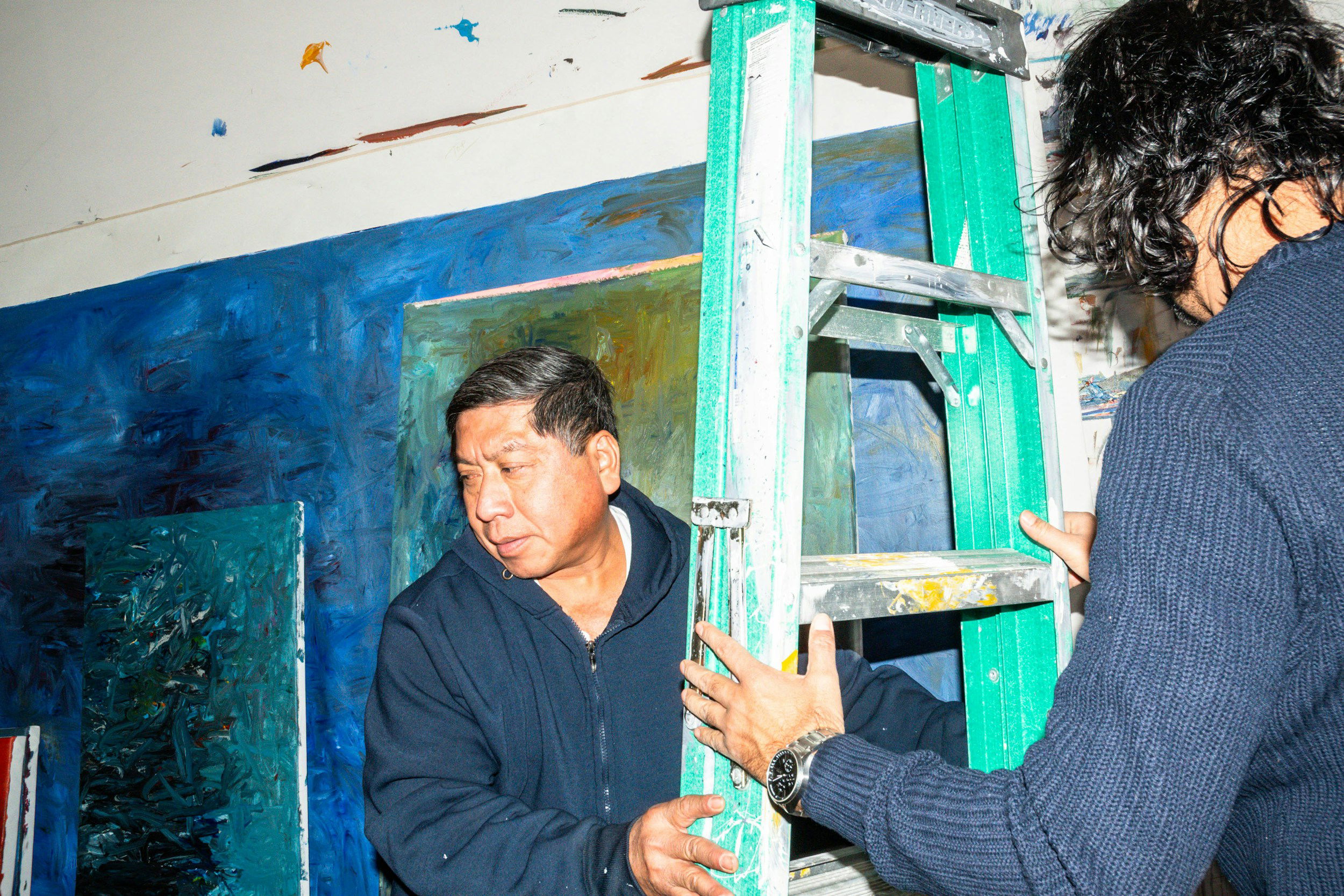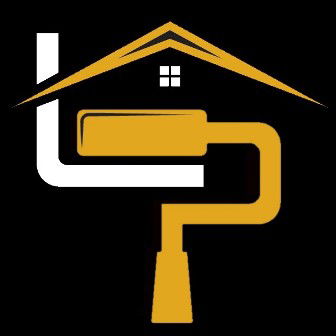Safe Practices in Residential Painting: Emphasizing PPE

Key Features:
- Comprehensive PPE Overview: The article details essential PPE for residential painting, including respirators, masks, gloves, and safety goggles. This highlights the importance of protecting against inhalation of harmful substances and contact with irritants, ensuring a safer painting environment.
- Focus on Health and Safety: It emphasizes the health risks associated with painting, such as exposure to volatile organic compounds (VOCs) and other chemicals, and discusses the role of PPE in mitigating these risks. The article also stresses the importance of using low-VOC paints and maintaining good ventilation.
- Practical Safety Tips: The article offers practical advice on how to effectively use and maintain PPE, including how to choose the right type of gloves and goggles, and the importance of regular maintenance and proper storage of safety gear to ensure they remain effective and safe to use.
PPE for Home Painting
Welcome to Lightmen Daily: The Intersection of Home Improvement and Safety! Hello, DIY enthusiasts and professional painters! Today on Lightmen Daily, we're focusing on a key aspect of residential painting - the vital role of Personal Protective Equipment (PPE). Whether you're sprucing up your living space or tackling a large-scale home renovation, understanding and using PPE is fundamental to your safety. So, let's explore the importance of gearing up properly for your next painting project. If you’re all about smart and safe home improvement, make sure to hit that subscribe button!
"I'm crucial in painting but I don't hold any paint; I protect without covering a wall. I'm seen on faces, not canvases, and I guard more than just art. What am I?"
Answer Below
The Critical Role of PPE in Residential Painting
In the world of residential painting, personal protective equipment (PPE) plays a vital role in ensuring the safety of painters and homeowners alike. While painting can transform and rejuvenate living spaces, it also brings with it certain risks that must be mitigated through the proper use of PPE. Understanding the importance of PPE is key to conducting a safe and efficient painting project.
The Painter’s Safety Kit
- Respirators and Masks: The use of respirators and masks is crucial in residential painting, particularly in indoor environments where ventilation may be limited. These protective gears are designed to filter out harmful paint fumes, dust, and other airborne particles, thereby safeguarding the respiratory health of the painter. They are especially indispensable when dealing with high-VOC paints or during extensive sanding operations.
- Protective Gloves: Gloves are a necessity to protect the skin from direct contact with paints and solvents. This is particularly important when working with oil-based paints or strong cleaners, which can cause skin irritation or chemical burns. Using the right type of gloves (such as nitrile or latex) ensures that the hands are shielded effectively while allowing for flexibility and dexterity.
- Safety Goggles: Eye protection is another critical aspect of the painter’s safety kit. Safety goggles provide a barrier against splashes, sprays, and airborne debris, particularly during tasks like sanding, scraping, or spray painting. They are essential for preventing eye injuries and ensuring that vision is not compromised during the painting process.
Addressing Common Residential Painting Hazards
- Awareness and Preparedness: Undertaking a residential painting project involves more than just aesthetic improvements; it requires a keen awareness of the potential hazards. Painters and DIY enthusiasts need to be prepared for these risks by equipping themselves with the appropriate PPE.
- Minimizing Exposure: By using PPE effectively, painters can minimize their exposure to hazardous materials and conditions. This not only ensures the safety and well-being of the painter but also contributes to a more controlled and professional painting process.
- Educating Homeowners: For professional painters, part of the job involves educating homeowners about the safety measures taken during the project. This transparency builds trust and demonstrates a commitment to safety and professionalism.
Personal protective equipment is an indispensable aspect of residential painting, playing a critical role in safeguarding painters from various occupational hazards. Whether you are a professional painter or tackling a DIY project, prioritizing the use of PPE is essential for a safe painting experience. At Lightmen Painting, we emphasize the importance of PPE in every project, ensuring that safety is always at the forefront. Stay informed and equipped as you bring new life to your spaces, and remember, in painting, safety is just as important as the final finish.
In Our Experience:
"A lot of guys fight this. It's a pain to have to keep your safety glasses on when your spraying out ceilings right. But on the flip side, you don't have to wipe paint out of your eyes and you don't have to worry about it dripping in your eye (had that happen plenty of times and its not fun to wash your eyeball). We understand it's best to just say have you PPE on at all times but there are exceptions. Use your head and look around for the hazards that apply, then act accordingly. "
Identifying and Mitigating Risks in Residential Painting
Residential painting, while transformative and fulfilling, comes with its share of potential hazards, particularly related to chemical exposure, skin and eye irritation, and respiratory concerns. Understanding these risks and adopting effective mitigation strategies is crucial for both professional painters and DIY enthusiasts. This section of the blog is dedicated to identifying these risks and providing practical tips to ensure safety during painting projects.
Chemical Exposure: Understanding and Protection
- Hazardous Chemicals in Paints and Solvents: Many commercial paints and solvents contain chemicals that can be harmful if not handled correctly. These include volatile organic compounds (VOCs), which can emit gases affecting indoor air quality and overall health.
- Safety Measures: It's essential to use low-VOC or VOC-free paints whenever possible. Additionally, ensure good ventilation in the workspace, and always read the labels and safety data sheets for any product used to be aware of potential hazards and recommended safety precautions.
Skin and Eye Irritation: Preventive Steps
- Direct Contact with Paints: Paints, especially those with harsh chemicals, can cause skin and eye irritation upon direct contact. This risk is elevated when dealing with oil-based paints or strong cleaning solvents.
- Protective Wear is Key: To prevent skin and eye irritation, wearing protective gear like gloves and safety goggles is non-negotiable. Gloves should be chemical-resistant, and goggles should fit securely to protect against splashes and fumes.
Respiratory Concerns: Ensuring Clean Air
- Risks from Inhaling Paint Fumes: Inhaling paint fumes, particularly in poorly ventilated spaces, poses significant respiratory risks. Prolonged exposure can lead to a range of respiratory issues, from minor irritations to more severe health concerns.
- Ventilation and Respiratory Protection: Always ensure adequate ventilation in your painting area – open windows, use fans, and consider an air purifier to help circulate and clean the air. When working in enclosed spaces or with high-VOC products, wear a suitable respirator to filter out harmful particles and fumes.
In the world of residential painting, being informed about and prepared for potential risks is crucial. By understanding the hazards associated with chemical exposure, and taking steps to prevent skin, eye, and respiratory irritation, you can ensure a safer painting environment. Always prioritize personal safety by choosing the right products, wearing protective gear, and maintaining a well-ventilated workspace. Remember, a successful painting project is not just measured by the visual outcome, but also by the safety practices employed throughout the process. Stay tuned to our blog for more insights into safe and effective painting practices, and here’s to ensuring your next painting project is as safe as it is transformative!
Why did the painter refuse to play cards? Because he was already dealing with too many "layers" and didn't want to "gloss" over the rules! Reminds me of the time I played poker after a day of painting. With paint in my hair and still wearing my PPE, let's just say, I was all about 'bluffing' with my 'mask' on!
Training and Adherence to PPE Guidelines in Painting
In the realm of residential painting, the correct usage of Personal Protective Equipment (PPE) is paramount for ensuring safety. However, proper utilization of PPE is not based on instinct; it requires comprehensive training and consistent practice. In this section, we'll explore the importance of PPE training and the best practices for maintaining and caring for your protective gear, emphasizing their critical role in every painting project.
Importance of Correct PPE Usage
- PPE Training: Understanding how to effectively use items such as respirators, gloves, and goggles is essential for maximum protection. Training in PPE usage is crucial, especially for professional painters or those undertaking significant DIY projects. This training should cover how to correctly wear, adjust, and use each piece of equipment.
- Regular Refreshers: Staying updated with the latest best practices in PPE usage is essential. Regular refresher courses or training sessions help ensure that painters are always using their protective gear in the most effective way possible, thus enhancing safety during every painting project.
Maintaining and Caring for PPE
Proper maintenance of PPE is as important as its correct usage. Well-maintained protective gear ensures maximum safety and longevity, making it ready for use whenever needed.
- Regular Inspection and Cleaning: Regularly inspect your PPE for any signs of wear and tear. Replace any item that is damaged or compromised. Additionally, keeping your PPE clean is essential. For example, regularly washing gloves and sanitizing goggles can prevent contamination and extend their life.
- Proper Storage: Store your PPE in a clean, dry place. Proper storage is vital for preserving the condition of PPE and ensuring that it remains effective for future use. Avoid exposing PPE to direct sunlight or extreme temperatures, as these conditions can degrade the materials over time.
Prioritizing Safety in Home Painting: Essential Tips from Lightmen Painting
Welcome back to Lightmen Painting, your go-to source for expert advice in the world of residential painting. Today, we're emphasizing the critical role of safety in home painting projects. Whether you're a DIY enthusiast embarking on a new project or a professional painter refining your craft, understanding and implementing safety measures is crucial. Let’s dive into the importance of prioritizing safety in every painting job.
Safety: The Foundation of Home Painting
- Safety First: In any home painting project, safety should always be the top priority. It's essential to recognize the potential hazards associated with painting and to take proactive steps to mitigate these risks.
- Understanding Risks: Painting involves working with chemicals and equipment that can pose risks if not handled correctly. Awareness of these risks and knowledge of how to manage them is key to ensuring a safe painting experience.
PPE Usage: A Must in Painting
- Protective Gear: As discussed, Personal Protective Equipment (PPE) is vital in safeguarding against potential hazards. This includes using respirators, gloves, goggles, and other protective wear to minimize exposure to harmful substances and prevent injuries.
- Proper PPE Training: Whether you’re painting a small room or an entire house, understanding how to use PPE correctly is essential. We recommend thorough training or refreshers on PPE usage for all painters to enhance safety.
Sharing Knowledge: A Community Approach
- Educating Fellow DIYers and Professionals: Sharing knowledge about safety practices in painting is crucial. We encourage you to share this video with fellow DIY enthusiasts and professional painters to spread awareness about the importance of safety in painting.
- Staying Informed: Subscribe to Lightmen Painting for more insights and tips on home improvement safety. By staying informed, you can continuously improve your practices and ensure safety in all your painting projects.
Thank you for joining Lightmen Painting today as we explored the importance of safety in residential painting. Remember, a successful home painting project is not just about achieving a beautiful finish; it's also about completing the job safely and responsibly. If you found this video helpful, please give us a thumbs up, share it with your community, and don’t forget to subscribe for more home improvement safety tips. Until our next session, stay safe, and empower yourself to transform your space confidently and responsibly!
-
People Also Ask:
What are the primary health and environmental benefits of using Acro Pure Interior Paint?
Acro Pure Interior Paint offers significant health benefits primarily due to its ultra-low VOC (Volatile Organic Compounds) content and low odor formulation. These features minimize the release of volatile organic compounds, which are known to contribute to indoor air pollution and can cause health issues such as headaches, dizziness, and respiratory problems. By using Acro Pure, indoor environments become safer and more suitable for individuals with allergies, respiratory issues, or heightened sensitivity to chemical exposures.
Why is the acrylic resin system important in the formulation of Acro Pure Interior Paint?
The acrylic resin system in Acro Pure Interior Paint enhances its performance by providing superior durability and a high-quality finish. Acrylic resins form a hard, flexible film that is highly resistant to weathering, UV rays, and chemical degradation. This contributes to the paint's ability to cover and hide previous colors and imperfections effectively, ensuring even and comprehensive coverage with fewer coats. Additionally, the resilience of this resin helps maintain the aesthetic qualities of the paint over time, reducing the need for frequent touch-ups and repaints, thereby making it a cost-effective solution as well.
How does Acro Pure Interior Paint ensure effective application and long-term durability?
Acro Pure Interior Paint is designed for easy application and exceptional durability. It offers great coverage and hides, effectively covering previous colors and masking surface imperfections with fewer coats needed, which saves both time and materials. The paint is also noted for its splatter and stain resistance, enhancing the ease of application and maintaining a clean, professional finish during the painting process. Post-application, this resistance ensures that walls can withstand everyday wear and tear, making the paint particularly suitable for high-traffic areas or spaces requiring frequent cleaning.
-
SUBSCRIBE TO OUR BLOG: Stay informed with the latest in Painting and DIY projects by subscribing to Lightmen Painting. Get insights, tips, and more delivered straight to your inbox. We would also love to know what you would like to read about, leave thoughts on where we should go next. Interests, Topics, Ideas, all are welcome.
"In the art of painting, as in life, preparation and protection are key. Donning your Personal Protective Equipment (PPE) is like setting the foundation for success. It reminds me of the time I underestimated the fumes during my first big painting project. That experience taught me an invaluable lesson: safety isn't just a precaution; it's the cornerstone of excellence. Every time you strap on that respirator, pull on those gloves, or adjust your goggles, you're not just protecting yourself; you're honoring the craft and respecting the journey. Remember, the true masterpiece isn't just the finished wall, it's the care and wisdom you bring to every brush stroke."
Answer: Safety Goggles
If your in the Portland, Or. area and need advice or a free no obligation estimate call us at 503-389-5758 or email scheduling@lightmenpainting.com
Shout Out
BLS - Industry Insights for Painters
The Bureau of Labor Statistics provides comprehensive information on the painting industry, covering everything from job outlooks to required skills. Lightmen Painting values such resources that help us stay informed and committed to excellence in our craft. Learn more at BLS.gov.
Thanks for stopping by Lightmen Daily! Stay tuned for more practical tips and expert advice on making your painting projects flawless, from wall to floor!
Definitions
- Painter’s Safety Kit: This includes respirators and masks to filter out harmful fumes, dust, and particles, protective gloves to shield the skin from contact with paints and solvents, and safety goggles to protect the eyes from splashes and debris.
- Addressing Common Hazards: Awareness of potential risks, minimizing exposure, and educating homeowners about safety measures are essential aspects of ensuring a safe painting environment.
- Identifying and Mitigating Risks: Understanding chemical exposure, preventing skin and eye irritation, and ensuring clean air by addressing respiratory concerns are crucial for safety during painting projects.
- Training and Adherence to PPE Guidelines: Proper training in the correct usage of PPE, regular refreshers, and maintenance and care of protective gear are emphasized for maximum safety.
- Prioritizing Safety in Home Painting: Safety should always come first in any painting project, with a focus on understanding risks, using proper protective gear, and sharing knowledge within the painting community.
Lightmen Painting Serving: Portland, Tigard, Lake Oswego, Tualatin, West Linn, Milwaukie, Sherwood, Happy Valley, Oregon City, Beaverton, Hillsboro, Gresham


